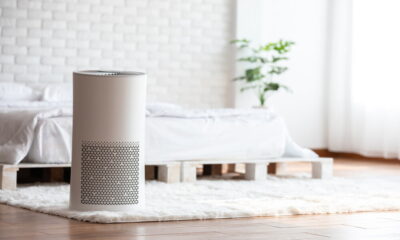Did you know that 1.7 trillion gallons of water are wasted every year in the United States alone? You can do your part to reduce this problem in your own home!
For most of us, the bathroom is one of the smallest rooms in our homes and it’s also one of the easiest to make more eco-friendly. No matter if you’re shopping for products or doing DIY bathroom renovations, there are many ways to incorporate environmentally friendly elements into your bathroom design—from water-saving shower heads to bathtubs made from sustainable materials. Here are just a few simple steps to get you started on creating an eco-friendly bathroom space in your home.
In this article, we’ll go over how to create an eco-friendly bathroom that meets all your sustainable needs!
6 Environmentally friendly Bathroom Tips
There are a lot of amenities in your bathroom. You can find ways to make any of them more sustainable. Here are some of the most important.
Toilets
The typical American flushes their toilet five times a day. While we can’t all purchase low-flow toilets, using some of these techniques can significantly reduce your use of water and still provide you with a sparkling clean bathroom: · Take shorter showers – The average shower lasts 10 minutes and uses 20 gallons of water. If you have time for only three showers per week (30 minutes total), you’ll cut your household water usage by one third. Turn off the faucet while brushing your teeth – Turning off that tap while brushing your teeth is easy way to save water and be an eco friendly person – along with hundreds of dollars in wasted bills.
Sinks
The first step in creating a sustainable bathroom is easy: turn off your water while you brush your teeth. Many bathrooms have a second sink for rinsing toothbrushes; if yours doesn’t, that’s no problem. Just turn on your faucet and rinse your brush over it (put a barrier like a shower curtain between you and the faucet so droplets don’t get everywhere). If we all did these things every day—turning off our taps when we brush our teeth and floss—we could save enough water to fill 2 Olympic swimming pools! Over time, shaving minutes here and there will add up, reducing our environmental impact as well as saving money. We may not be able to control how much water we use in other areas of our lives (e.g., washing clothes), but what happens at home is within our control. Don’t waste it!
Showers
Take 5 minutes in your shower. Save hundreds of gallons of water. Take shorter showers —most of us spend 10-20 minutes a day on average in our bathrooms. No matter what time you have, there is always a way to make your shower more efficient and save time while also saving money and preserving energy by not having as much hot water running down your drain. If you’re not sure where to start with being more eco-friendly in your bathroom, get started today! Save water, save money, help out Mother Earth—we promise it won’t be a hardship but rather a pleasure! You can thank us later…
Faucets
How you conserve water with your faucet goes a long way. Energy Star states that if every household replaced one old, leaky faucet with a new, efficient model, Americans could save 4 billion gallons of water each year. But it’s not just about lowering your water bill. Replacing a faucet is also eco-friendly as most faucets are made out of plastics which emit greenhouse gases when they are produced and disposed of. Switching to sustainable shower fixtures such as aerators on your showers and low flow toilets can greatly reduce your home’s carbon footprint while improving efficiency and comfort for you. Be sure to consult local contractors for suggestions or alternatives on making your bathroom more environmentally friendly; some ideas may surprise you!
Soap, Body Wash, and Shampoo
Many commercial soaps and body washes come in plastic bottles, are packaged in plastic bags, and contain other synthetic ingredients—all of which take hundreds of years to biodegrade. Even when you’re buying green products, though, it can be difficult to tell whether they use eco-friendly packaging. That’s why it’s a good idea to opt for more environmentally friendly products like soap bars instead of liquid soaps, bar shampoos (rather than liquids), or products made from sustainable ingredients that won’t pollute your septic system. When possible, look for green or organic labels on shower and bath products.
Cleaning Products (natural materials)
When it comes to making your bathroom more sustainable, you can start by limiting use of harsh chemical cleaning products. Be sure you’re only using natural alternatives that are less harmful for humans and easier on the environment. For example, clean tiles with vinegar and water, use baking soda instead of bleach, and stock up on cleaning products that don’t have a lot of toxic chemicals. Switching from mainstream cleaning products to ones that are natural or organic isn’t necessarily safer – they could still contain potentially dangerous ingredients such as ammonia and phosphates! -–Always check labels carefully so you know what you’re buying.
Conclusion
We live in a culture where going green is all of a sudden cool. Companies are working towards more sustainable business practices, major cities are looking at ways they can reduce waste and pollution, and people everywhere are becoming more conscious about their own eco-footprint. It’s not just a fad; it’s here to stay. Whether you’re in charge of designing your home or bathroom, we’ve got some helpful tips for creating one that works for you, your family and Mother Earth.


 Environment10 months ago
Environment10 months agoAre Polymer Banknotes: an Eco-Friendly Trend or a Groundswell?

 Environment12 months ago
Environment12 months agoEco-Friendly Home Improvements: Top 7 Upgrades for 2025

 Features9 months ago
Features9 months agoEco-Friendly Cryptocurrencies: Sustainable Investment Choices

 Features10 months ago
Features10 months agoEco-Friendly Crypto Traders Must Find the Right Exchange































